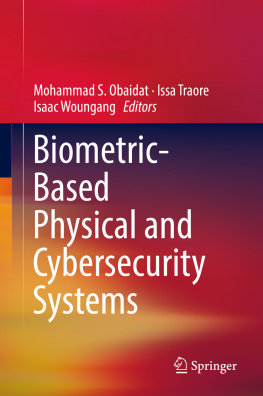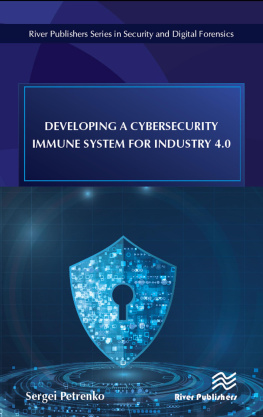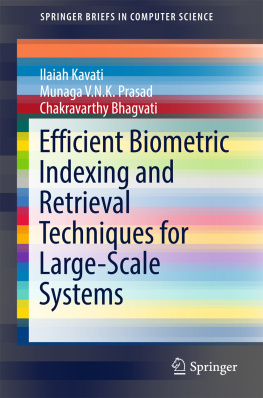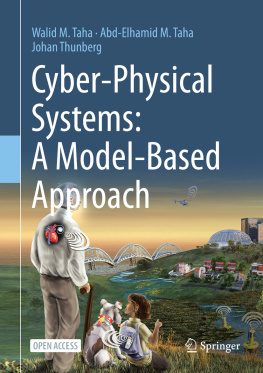Mohammad S. Obaidat - Biometric-Based Physical and Cybersecurity Systems
Here you can read online Mohammad S. Obaidat - Biometric-Based Physical and Cybersecurity Systems full text of the book (entire story) in english for free. Download pdf and epub, get meaning, cover and reviews about this ebook. publisher: Springer International Publishing, genre: Romance novel. Description of the work, (preface) as well as reviews are available. Best literature library LitArk.com created for fans of good reading and offers a wide selection of genres:
Romance novel
Science fiction
Adventure
Detective
Science
History
Home and family
Prose
Art
Politics
Computer
Non-fiction
Religion
Business
Children
Humor
Choose a favorite category and find really read worthwhile books. Enjoy immersion in the world of imagination, feel the emotions of the characters or learn something new for yourself, make an fascinating discovery.
- Book:Biometric-Based Physical and Cybersecurity Systems
- Author:
- Publisher:Springer International Publishing
- Genre:
- Rating:4 / 5
- Favourites:Add to favourites
- Your mark:
- 80
- 1
- 2
- 3
- 4
- 5
Biometric-Based Physical and Cybersecurity Systems: summary, description and annotation
We offer to read an annotation, description, summary or preface (depends on what the author of the book "Biometric-Based Physical and Cybersecurity Systems" wrote himself). If you haven't found the necessary information about the book — write in the comments, we will try to find it.
Biometric-Based Physical and Cybersecurity Systems — read online for free the complete book (whole text) full work
Below is the text of the book, divided by pages. System saving the place of the last page read, allows you to conveniently read the book "Biometric-Based Physical and Cybersecurity Systems" online for free, without having to search again every time where you left off. Put a bookmark, and you can go to the page where you finished reading at any time.
Font size:
Interval:
Bookmark:
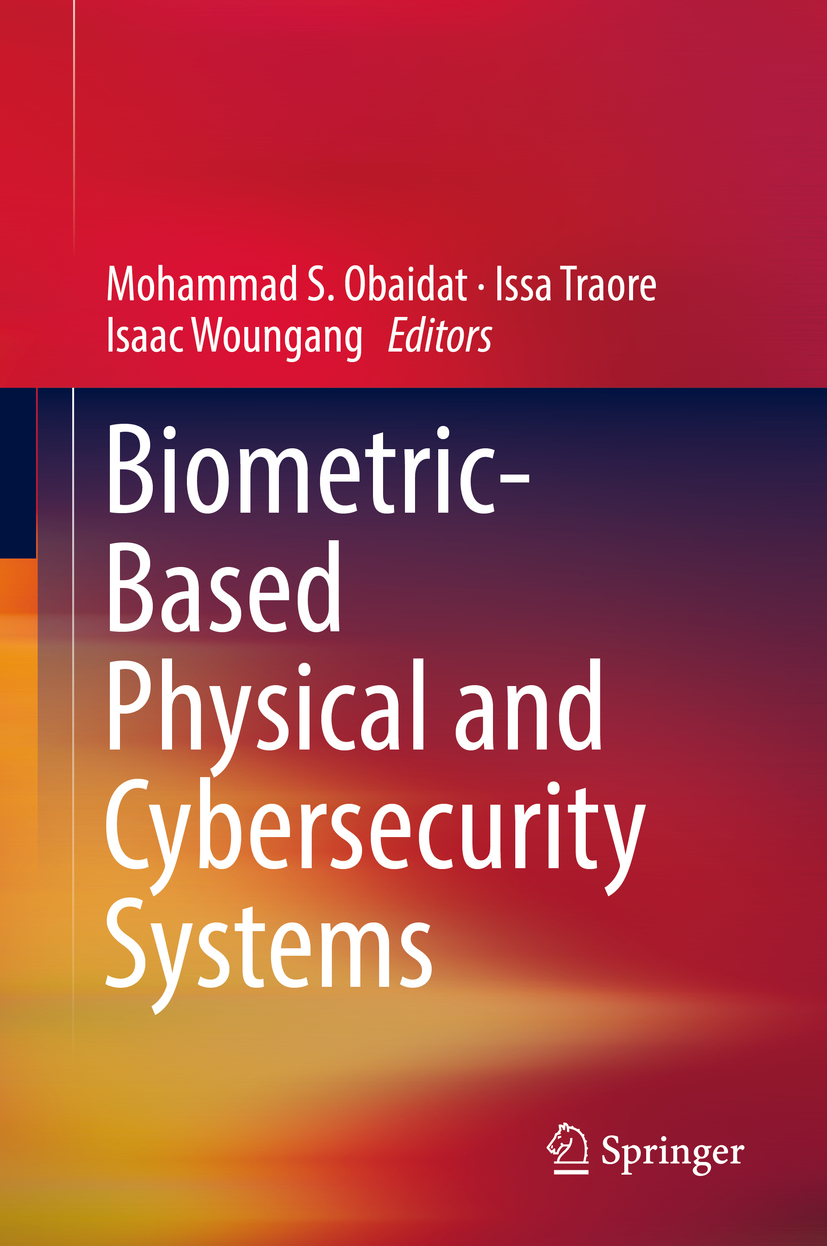

This Springer imprint is published by the registered company Springer Nature Switzerland AG
The registered company address is: Gewerbestrasse 11, 6330 Cham, Switzerland
To Our Families
Biometrics represents one of the most robust and reliable forms of human identification in physical and cyber security. The last decade has witnessed tremendous advances in sensor technologies and data processing techniques and algorithms. This has led to the strengthening of traditional biometrics technologies (e.g., fingerprint, face, iris, retina, keystroke dynamics, and voice) and the emergence of several new technologies, which are showing great promises. The confluence of the consumer markets and national security needs have led to a growing demand for biometrics products and services. For instance, the integration of biometric sensors in smartphones and the use of these technologies for online banking have boosted the adoption of biometric technologies for the masses.
Biometrics carries a strong ability to establish whether an individual is genuine or an impostor. Such an ability to reliably identify individuals coupled with the extreme difficulty of forging biometric data has made it the most trusted form of human identification.
According to Research and Markets Ltd., a market research firm, the global biometrics market will reach $42.4 billion by 2021. Due to advancements in the technological landscape and better understanding by people, biometrics technologies are now used in various sectors including government, defense, law enforcement, finance, e-commerce, and education. Some countries have started using biometrics to prevent identity fraud during elections or in welfare management and provision.
Several technological advancements have occurred in this area in the last 15 years or so. Now it is possible to collect high-quality data adapted to specific context. For instance, new optical fingerprint scanners are able to sense the presence of a finger and start the scanning process automatically; they can adapt to the capture environment and filter out some of the imperfection and noise. Breakthrough in webcam technologies has improved face detection effectiveness; increasing the accuracy of face biometric technologies.
There are several emerging technologies such as DNA analysis, keystroke recognition, gait analysis, EEG/ECG analysis, mouse dynamics, odor, and touchscreen dynamics that are showing great promises in industry.
As part of this upward trend, we have seen the appearance of multimodal biometric systems that leverage in hybrid platforms the strength of several technologies to improve identification accuracy.
Robustness and reliability of biometric scanning technologies
Reduced dependencies on underlying platforms
Security of biometric templates and samples
Privacy of biometric users
User acceptability
Biometrics forgery
Biometrics systems testing
Biometrics hardware and middleware
Mobile biometrics devices and platforms
Cloud-based biometric systems
Scalable and dependable biometric system architectures
Integration of biometrics into cryptosystems
The book presents the state of the art in biometrics technologies and reports on new approaches, methods, findings, and technologies developed or being developed by the research community and the industry to address the aforementioned challenges.
The book focuses on introducing fundamental principles and concepts of key enabling technologies for biometric systems applied for both physical and cyber security, disseminates recent research and development efforts in this fascinating area, investigates related trends and challenges, and presents case studies and examples.
It also covers the advances, and future in research and development in biometric security systems, by reviewing the fundamental techniques in the design, operation, and development of these systems.
It is intended for researchers, developers and managers, and students of computer science, information science and technology and electrical and computer engineering, in particular, graduate students at the master and PhD levels, working or with interest in the aforementioned areas.
The book consists of a selection of 21 peer-reviewed chapters contributed by leading experts in biometrics. Chapter is an introduction that gives general perspective on biometrics, and the remaining chapters are structured around the following five major themes: advances in legacy or traditional biometric technologies, emerging biometric technologies, hybrid biometric technologies, enabling technologies or platforms, and the interaction between biometric technology and society. Chapter 1 introduces the concept of biometrics. The categorization of biometric technologies is presented, along with some discussion on biometrics requirements and characteristics and the uses of biometrics technologies. This chapter also presents well-established biometric systems along with operation modes. Finally, some perspectives in terms of contemporary developments that keep up with the promises and expectations of the biometric discipline are discussed.
Font size:
Interval:
Bookmark:
Similar books «Biometric-Based Physical and Cybersecurity Systems»
Look at similar books to Biometric-Based Physical and Cybersecurity Systems. We have selected literature similar in name and meaning in the hope of providing readers with more options to find new, interesting, not yet read works.
Discussion, reviews of the book Biometric-Based Physical and Cybersecurity Systems and just readers' own opinions. Leave your comments, write what you think about the work, its meaning or the main characters. Specify what exactly you liked and what you didn't like, and why you think so.

